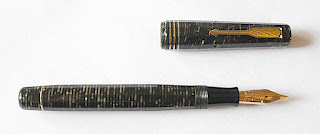A note on methodology.
Most of the time when we travel and I blog I do so in approximately real time, usually
the evening after the events under discussion. Right now I am doing so almost
four weeks later and it is a different experience. Rather than processing the
day’s events I am recalling them and it makes it a bit harder to edit and
choose images. This entry will probably end up with more imagesand text than I usually
allow myself, partly because of nostalgia and partly because at home I have a
solid quick connection that makes it easy to upload stuff. Comments are
especially welcome here and on facebook.
29 January 2017
Sunday was our first full day in Cuba and the first of
several days in Santiago de Cuba. Apart from day tours in various places, this
was our first experience touring with a group. It would be a new experience and
I’ll have more to say about that later. But on that day I think that all of us
were more absorbed with taking in the sights and sounds of Cuba.
A couple of years earlier we had spent some considerable
time on native American lands in the southwestern US and had learned to look
beyond apparent poverty to see the culture; and most of the folks on this tour
were far more travelled than we were, so few people remarked the low level of
material comforts, most of us were more interested in the environment and the people
and their culture.
We began the day with a visit Santiago’s Plaza de la Revolucion.
Most cities in Cuba have at least one such plaza commemorating the revolutions of
1868, 1898 and 1959. It is dedicated to Antonio Maceas a hero of 1898. It was
dedicated by Fidel in 1991 and has hosted papal visits and rallies.
 |
| Teatro Heredia, a typical street scene at the modern outskirts of this regional capital that is Cuba's second largest city. |
 |
| Plaza de la Revolucion |
 |
| An image of the modern city |
From there we went to Santa Ifegenia cemetary, where Maceo is buried as well as José Marti and, now, Fidel Castro.
 |
| The Entry to one of the most important cemeteries in the nation |
 |
| Martí |
 |
| The honor guard at Martí's monument. They are specially chosen, mainly we were told, for height. |
 |
| I was caught by this image of Christ surrounded by revolutionary flags, over the next two weeks I'd get used to it. |
 |
| The grave of Maceo |
 |
| Fidel's grave. His ashes lie beneath the rock |
Lunch was at the rooftop restaurant of the Hotel Casa Granda
at the cneter of Santiago de Cuba, which afforded some great views. After lunch
the program allowed us ample time to roam the streets on our own, discovering
the architecture and cars that are equally part of the country’s heritage. And
at lunch we had our first direct encounter with Cuban music, a very talented
group that entertained us.
 |
| The first of many musical groups that we would hear. The fiddler may have been one of the best musicians we saw throughout the trip |
 |
| The bar at Casa Granda |
 |
| The city from the rooftop |
 |
| The busy harbor from atop the rooftop restaurant |
 |
| Another typical figure, this fellow chatted and serenaded until finally I gave him a CUC (about $1.28). Not a beggar, note his cleanliness and garb, but what were referred to as "street corner entrepreneurs." |
 |
| My dad had 1956 and 1958 Plymouths, this one was from '57 |
 |
| Sharon at a typical backstreet. Off the main streets the buildings were in a pretty sad state. |
In the afternoon a visit to the oldest remaining structure
in Cuba, the Diego Velásquez house museum, brought us into contact with another
aspect that we would greatly appreciate in traveling with Road Scholar. Our
museum guide was the director-curator of the house, a trained archeologist.
Cubans, we would learn, love decorative arts and love to display the artifacts
of the past in domestic settings.
 |
| A stock image of the building's exterior. I forgot to take a photo |
 |
| The curator |
 |
| Original portion of the house and to the left restorations |
 |
| The entry into the 19th century portion of the building |
In the afternoon we were treated to a highly informative
lecture on the religions of eastern Cuba by a professor from one of the local
universisies who was both an anthropologist and a Santeria priest. We learned
that a) communist Cuba is not athiestic, b) the Cuban religion is nominally but
not exclusively Catholic, c) that most of the other religions are African
based, and d) that most Cubans believe in more than one formal religion, mixing
and matching with the added veneration of Nuestra Señora de la Caridad (more on
that later). It was our first direct exposure to the diversity and
idiosyncracies that make up Cuba.
 |
| I would learn to take better pictures of the lectures |
It was a long and very informative first day.
 |
| Rosa spent the day in the hotel room, where she was not neglected. |






























Comments